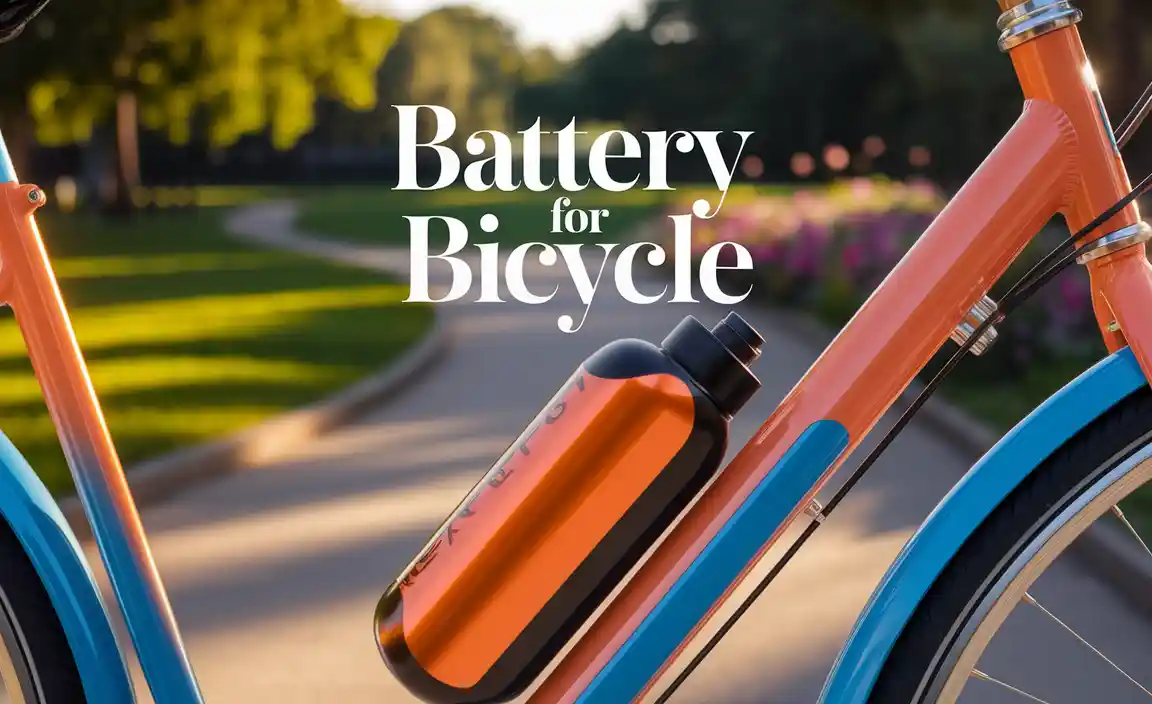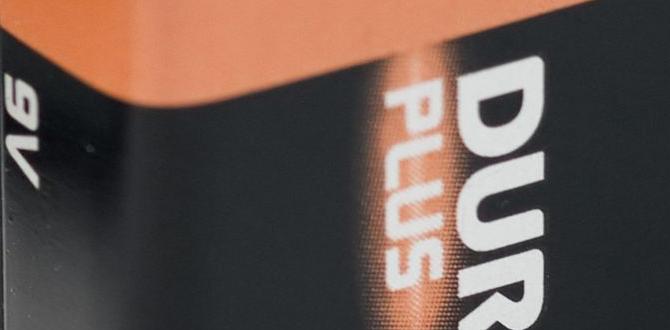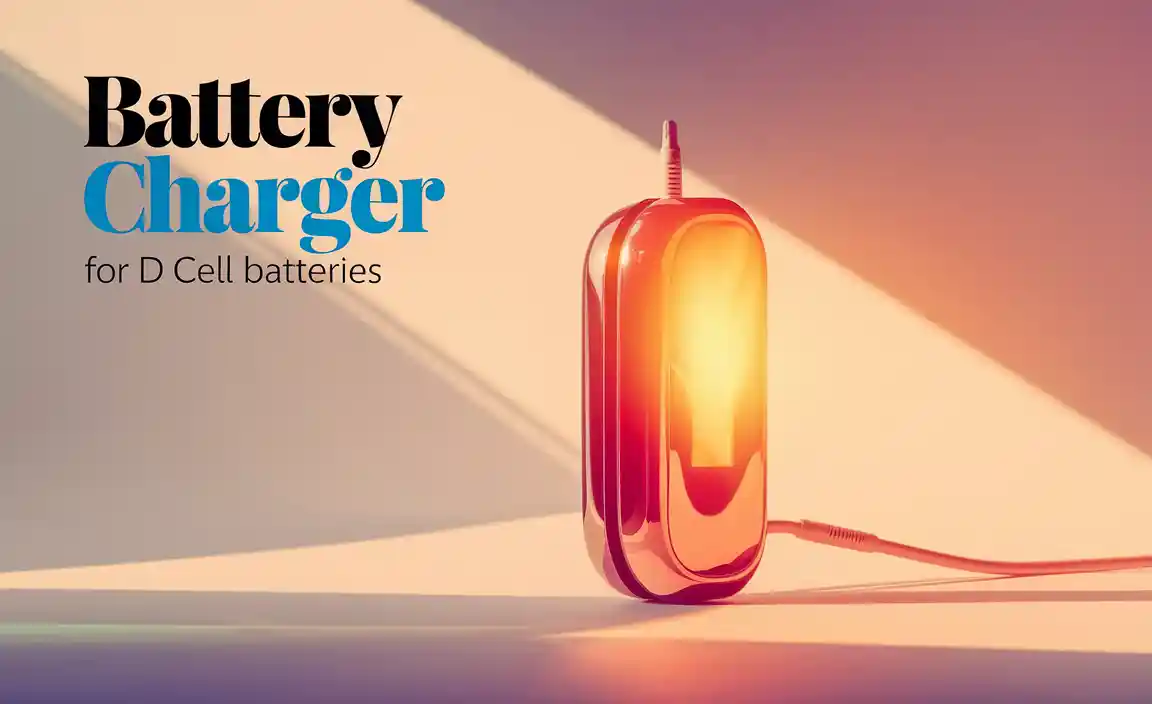Quick Summary: Changing your Mazda 3 key fob battery is a simple DIY task. Follow these easy steps to replace the CR2032 battery yourself, ensuring your keyless entry and ignition system works perfectly again in minutes. This guide provides clear, safe instructions for a hassle-free battery change.
Is your Mazda 3 key fob acting up? Do you find yourself fumbling with the door lock or struggling to start your car? A common culprit behind these annoyances is a dying key fob battery. It’s a small issue that can feel like a big problem, leaving you questioning if it’s time for an expensive repair. But don’t worry, this guide is here to help! You can easily swap out the battery yourself with just a few common tools and a little patience. We’ll walk you through each step, making the process straightforward and stress-free. Get ready to bring your key fob back to life!
Why Your Mazda 3 Key Fob Battery Needs Replacing
Your Mazda 3’s key fob is a tiny powerhouse, packed with technology that allows for convenient keyless entry, remote start (if equipped), and ignition starting. Inside this sleek casing sits a small coin cell battery, typically a CR2032. Like all batteries, it has a lifespan. Over time, the electrical signals it sends weaken, leading to a decreased range, intermittent operation, or complete failure.
Several signs indicate it’s time for a new battery:
- The lock and unlock buttons require you to be very close to the car.
- The remote start function no longer works.
- You’re receiving a “key not detected” warning on your dashboard, even when the fob is in your pocket.
- The fob completely stops working.
Ignoring these signs can lead to inconvenience, especially in bad weather or when you’re in a hurry. Thankfully, replacing the battery is a simple, cost-effective solution that you can perform at home.
Understanding the Right Battery for Your Mazda 3 Key Fob
The vast majority of Mazda 3 keyless entry remote fobs use a standard 3-volt CR2032 lithium coin cell battery. This is one of the most common coin cell batteries available, making it easy to find at most convenience stores, drugstores, supermarkets, and electronics retailers. When purchasing a replacement, always double-check that you are buying a CR2032 battery to ensure compatibility. Using the incorrect battery type could damage your key fob.
It’s a good idea to keep a spare CR2032 battery on hand. This way, if your primary fob dies unexpectedly, you’ll have a backup solution readily available. For those who drive multiple vehicles or have multiple fobs for their Mazda 3, keeping a few extra batteries can save significant frustration down the line.
For more information on common battery types and their uses, you can refer to resources like the U.S. Department of Energy’s Consumer Battery Information Center, which offers general insights into battery technology and safety.
Tools You’ll Need
Changing the battery in your Mazda 3 key fob is a straightforward process that requires minimal tools. Here’s what you’ll need:
- New CR2032 Battery: Ensure it’s a fresh, high-quality battery.
- Small Flat-Head Screwdriver or Plastic Pry Tool: This will be used to gently separate the key fob casing. A plastic pry tool is ideal as it’s less likely to scratch or damage the fob’s plastic.
- A Soft Cloth or Towel: To protect the key fob and your work surface from scratches.
- Optional: Tweezers: Can be helpful for maneuvering the battery if your fingers aren’t nimble enough.
Having these items ready before you start will make the process smoother and quicker. Remember, patience is key when working with small electronic components.
Step-by-Step Guide: How to Change Battery for Mazda 3 Key
Let’s get your Mazda 3 key fob working like new again! Follow these simple steps carefully.
Step 1: Locate the Seam and Remove the Metal Key
First, take your Mazda 3 key fob in your hand. You’ll notice a small release latch or button on the side of the fob. This latch allows you to slide out the physical metal emergency key that’s stored inside the fob. Press and hold the release latch while pulling the metal key out completely. Set the metal key aside; you won’t need it for the battery change process, but it’s essential for manually unlocking your car doors if your fob battery dies again in the future.
Step 2: Separate the Two Halves of the Key Fob
Once the metal key is removed, look closely at the key fob casing. You should see a small seam running along the edge where the two halves of the plastic casing meet. This is where you’ll need your flat-head screwdriver or plastic pry tool.
Carefully insert the tip of your chosen tool into this seam. You’re looking for a small notch or crevice that allows you to gently pry the two halves apart. Work your way around the edge of the fob, applying gentle pressure to release the clips holding the casing together. Avoid using excessive force, as this could break the plastic. The casing should pop open relatively easily.
Step 3: Remove the Old Battery
With the key fob casing open, you’ll see the coin cell battery. It’s usually held in place by a small plastic clip or simply sits snugly in a compartment. Note the orientation of the battery (which side is facing up, usually the positive (+) side). You can gently use your finger, a plastic pry tool, or tweezers to lift the old battery out of its holder. Be careful not to touch any other internal components within the fob.
Step 4: Insert the New CR2032 Battery
Take your new CR2032 battery and carefully place it into the battery compartment. Make sure it’s oriented correctly, matching the positive (+) side of the battery with the corresponding contact point in the fob. Most battery compartments have a small diagram or marking indicating the correct orientation. The battery should sit flat and securely in its place.
Step 5: Reassemble the Key Fob
Once the new battery is in place, carefully align the two halves of the key fob casing. Gently press them together until they snap back into place. Ensure all the clips engage and the casing is sealed tightly all around. You should hear or feel a click as the parts reassemble.
Step 6: Test the Key Fob
Before reinserting the metal key, it’s crucial to test your newly powered key fob. Stand near your Mazda 3 and press the lock and unlock buttons. Your car should respond immediately. Try pressing the panic button as well, if applicable. If the fob is working correctly, congratulations! You’ve successfully replaced the battery.
Step 7: Reinsert the Metal Key
Finally, slide the metal emergency key back into its slot in the key fob until it clicks securely into place. This ensures it’s ready if you ever need it.
Tips for Extending Your Key Fob Battery Life
While replacing the battery is usually a simple fix, you can also take steps to help your key fob battery last longer:
- Avoid Accidental Button Presses: Keys often get jostled around in pockets or purses. Try to keep your key fob in a place where the buttons are less likely to be pressed accidentally. Even a single accidental press can drain power.
- Minimize Range Use: While convenient, repeatedly pressing the lock/unlock buttons from extreme distances can drain the battery faster than necessary.
- Store Fobs Properly: If you have a spare fob, store it away from the car when not in use. Some modern cars can detect a key fob even when it’s inside the house, which can continuously drain the battery.
- Check for Signal Interference: In areas with high radio frequency interference (like near certain industrial equipment or other strong wireless devices), your key fob might struggle to communicate, leading to more frequent button presses which drains power.
- Use Quality Batteries: Opt for reputable brands when buying replacement batteries. Cheaper, unbranded batteries may not last as long or perform as reliably.
Troubleshooting Common Key Fob Issues
Even after changing the battery, you might encounter a few common issues. Here’s how to address them:
Key Fob Still Not Working
If your key fob doesn’t work after replacing the battery, try these steps:
- Double-Check Battery Orientation: Ensure the positive (+) side of the CR2032 battery is facing the correct way. It might have popped out slightly during reassembly.
- Try Another New Battery: It’s rare, but you might have received a faulty new battery. Try a different one.
- Clean Battery Contacts: Sometimes, the metal contacts inside the fob can accumulate a bit of dirt or corrosion. Gently clean them with a pencil eraser or a cotton swab lightly dampened with rubbing alcohol (ensure it’s completely dry before reassembly).
- Re-synchronize Your Key Fob: In some cases, the key fob might lose its synchronization with the car’s system. Consult your Mazda 3 owner’s manual for specific re-synchronization procedures for your model year. This usually involves a specific sequence of turning the ignition on/off and pressing fob buttons.
Intermittent Operation
If your key fob works sometimes but not others, it could still be a weak battery, but also:
- Weak Battery: Even if it works, a battery that’s just starting to fade can cause intermittent issues. Replacing it is still the best first step.
- Internal Fob Damage: If the fob has been dropped or exposed to moisture, internal components might be damaged.
- Car’s Receiver Issue: Less commonly, there could be an issue with the receiver module in your car.
Key Fob Range is Reduced
A significantly reduced range is a classic sign of a weakening battery. Always try a new battery first. If the range doesn’t improve, consider potential interference or, in rare cases, a problem with the fob’s internal antenna.
When to Consider Professional Help
While DIY battery replacement is usually straightforward, there are times when it’s best to seek professional assistance:
- Damaged Key Fob: If your key fob case is cracked, buttons are missing, or you suspect internal damage from a drop or water exposure, a professional can assess and repair or replace it.
- Multiple Attempts Fail: If you’ve tried replacing the battery multiple times with fresh batteries and different fobs (if you have them), and the issue persists, there might be a deeper problem with the fob itself or your vehicle’s receiver system.
- Complex Programming Required: For certain Mazda models or if you purchase a new, unprogrammed key fob, professional locksmiths or dealerships may be needed to program it to your vehicle.
- Keyless Entry System Malfunctions: If you suspect a problem with the car’s keyless entry system in general, beyond just the fob battery, a mechanic can diagnose the vehicle’s components.
Dealerships and reputable automotive locksmiths are equipped to handle these more complex situations. They can also provide genuine replacement fobs and ensure proper programming for your Mazda 3.
FAQ: Mazda 3 Key Fob Battery Replacement
Q1: What kind of battery does a Mazda 3 key fob use?
A: Most Mazda 3 key fobs use a CR2032 3-volt lithium coin cell battery. Always check your owner’s manual or the old battery for confirmation.
Q2: How often should I replace my key fob battery?
A: Key fob batteries typically last between 2 to 4 years, but this can vary depending on usage and battery quality. Replace it when you notice symptoms like reduced range or failure to work.
Q3: Can I use a rechargeable battery in my key fob?
A: No, standard key fobs are designed for non-rechargeable 3V lithium coin cell batteries like the CR2032. Rechargeable batteries operate at a different voltage and may not function correctly or could damage the fob.
Q4: My key fob still isn’t working after changing the battery. What else could be wrong?
A: Ensure the new battery is inserted correctly (positive side up), try another brand-new battery, and check that the key fob’s internal contacts are clean. You may also need to re-synchronize your key fob with your car as per your owner’s manual.
Q5: Where can I buy a CR2032 battery?
A: CR2032 batteries are widely available at supermarkets, drugstores, electronics stores, and online retailers.
Q6: Is it difficult to change the battery myself?
A: No, changing the battery is a simple process that most people can do at home with basic tools like a small flat-head screwdriver or pry tool.
Q7: What if I break my key fob while trying to change the battery?
A: Be gentle when prying the fob open. If you accidentally break a piece, it might require professional repair or replacement. Using a plastic pry tool instead of metal can help prevent damage.
Conclusion
Taking care of your Mazda 3’s key fob by replacing its battery is a simple yet essential maintenance task. By following this guide, you’ve learned how to identify the signs of a dying battery, gather the necessary tools, and perform the replacement with confidence. Remember, a fresh CR2032 battery can bring your keyless entry and starting functions back to full power, saving you time, money, and the frustration of a non-responsive key fob.
Don’t let a weak battery inconvenience you. This DIY process is a testament to how straightforward car maintenance can be when you have the right information. So, next time your key fob seems sluggish, you’ll know exactly what to do. Keep your Mazda 3 running smoothly and conveniently by staying on top of these small but vital tasks!





